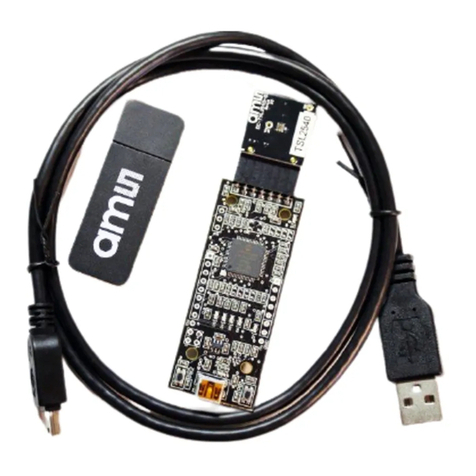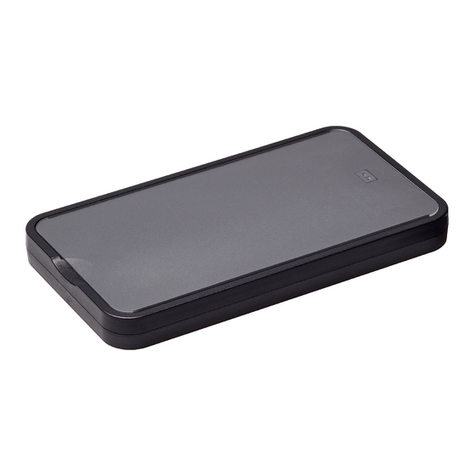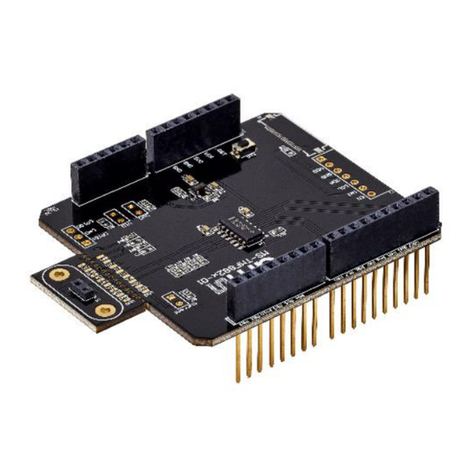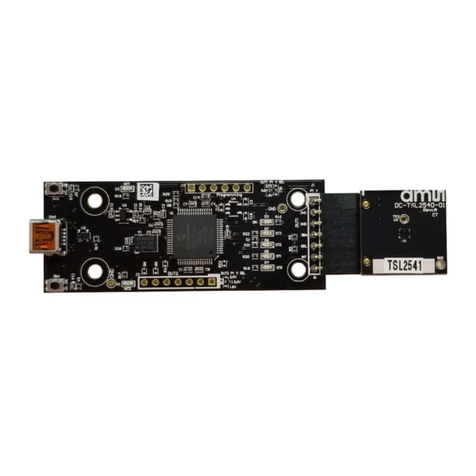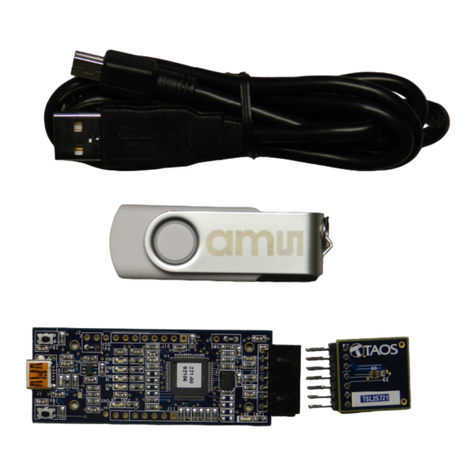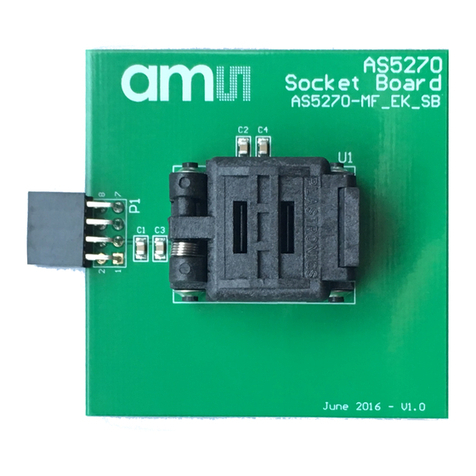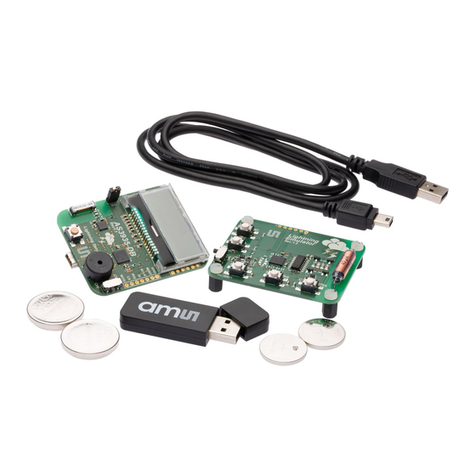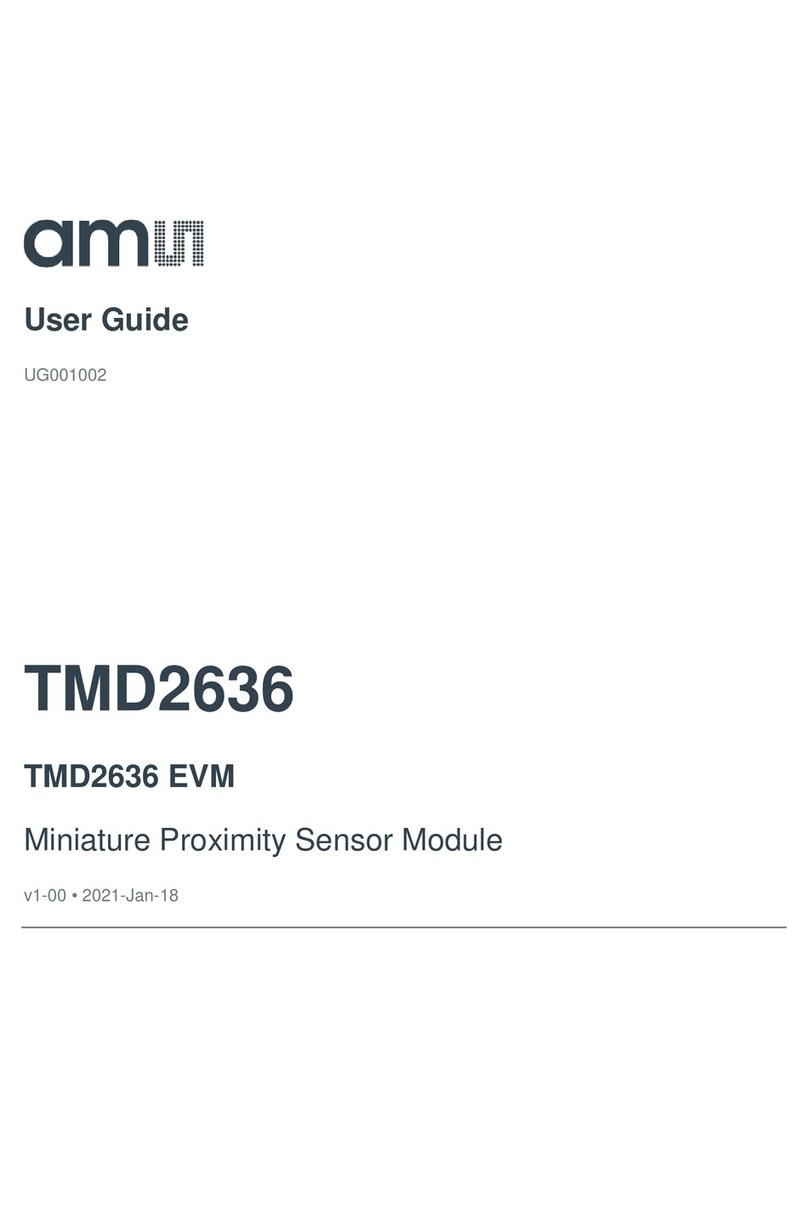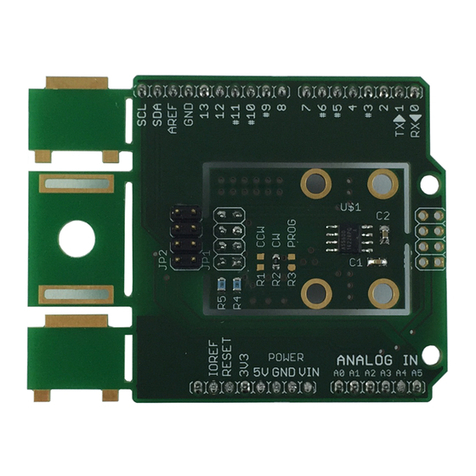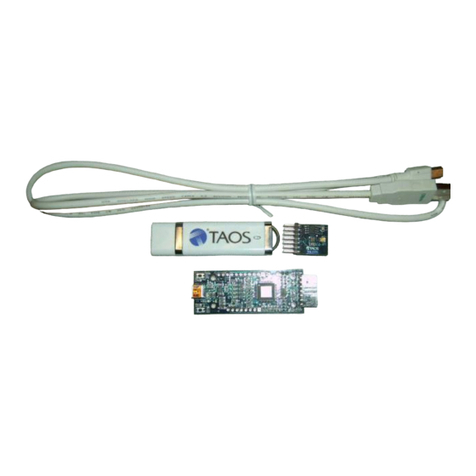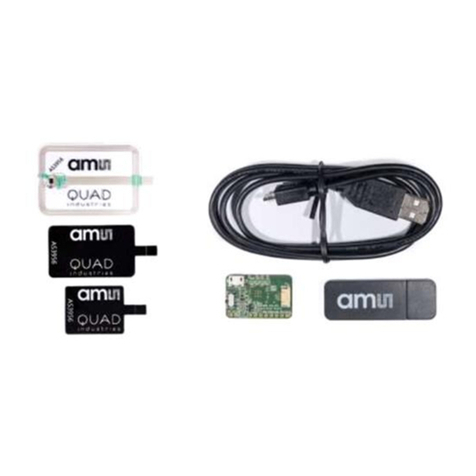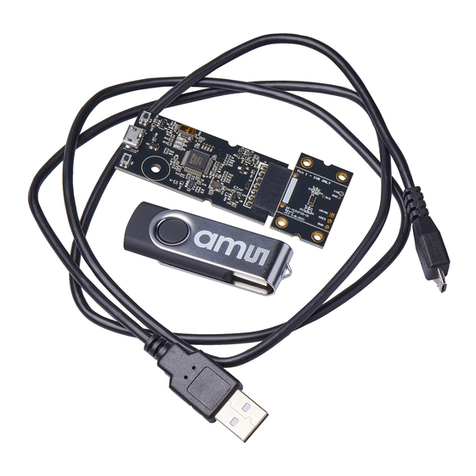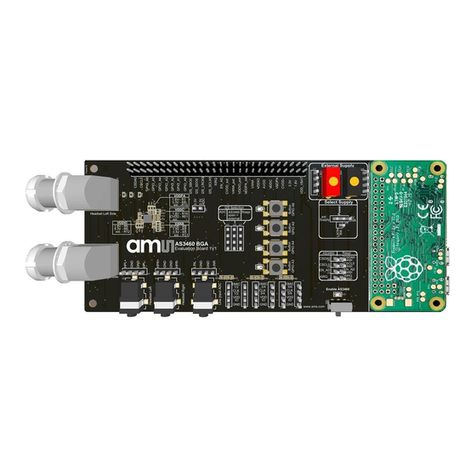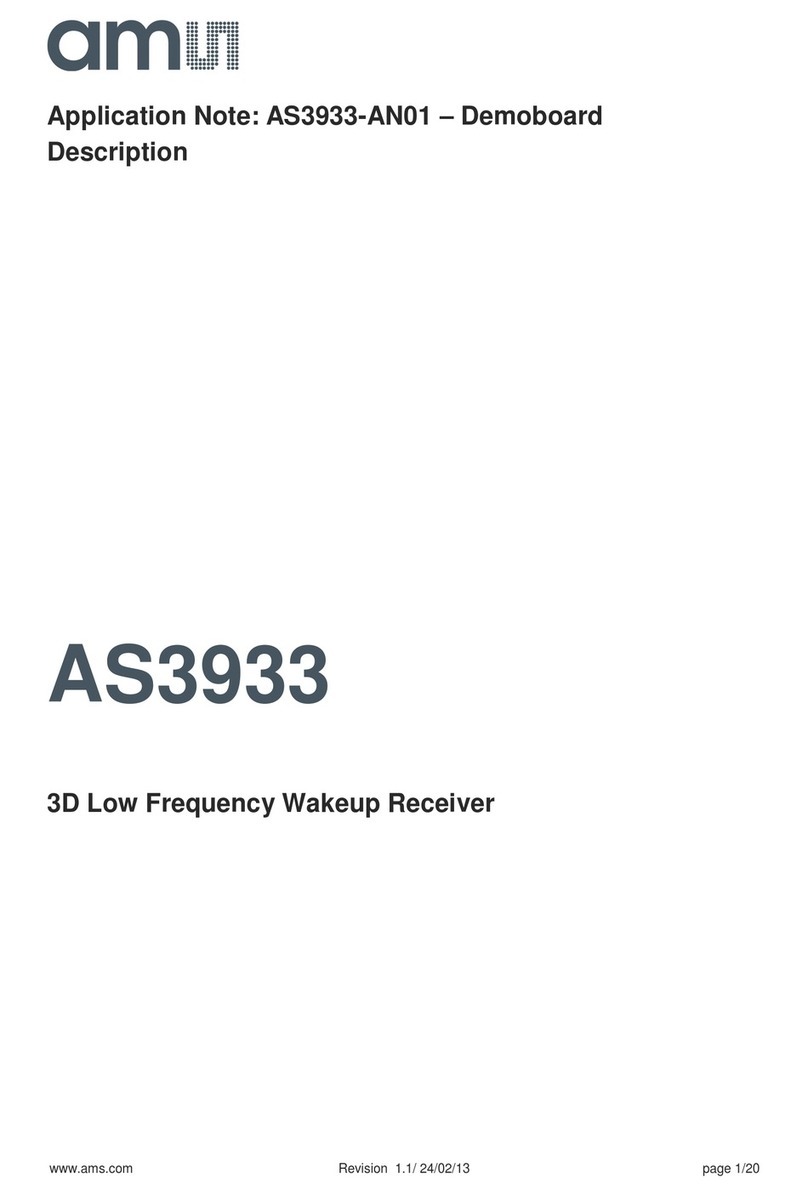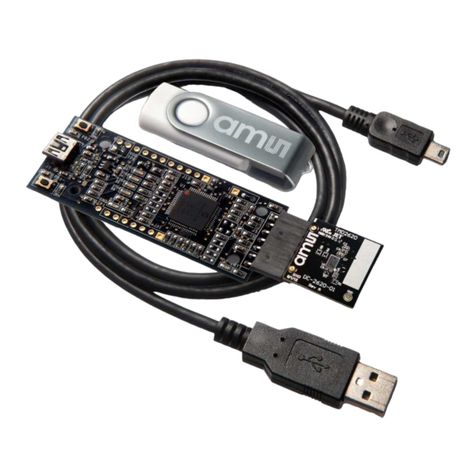
UG000493 •v1-00 • 2020-Jun-25
Content Guide
1Introduction....................................3
1.1 Kit Content.................................................... 3
1.2 Ordering Information .................................... 4
2Getting Started...............................5
3Hardware Description....................7
3.1 Hardware Architecture .................................7
3.2 Power Supply............................................... 8
4AS7030B Overview........................9
4.1 Optical Front End (OFE) .............................. 9
4.2 ECG Amplifier............................................. 12
4.3 Electrical Analog Front End (EAFE)........... 14
4.4 Light-to-Frequency Converter (LTF) .......... 15
4.5 ADC and FIFO ........................................... 15
4.6 Digital Interface.......................................... 17
4.7 Sampling Sequencer.................................. 17
5Software Description................... 23
5.1 Software Architecture................................. 23
5.2 Graphical User Interface............................ 27
5.3 FW, Driver, API.......................................... 55
6Revision Information................... 62
7Legal Information ........................ 63
